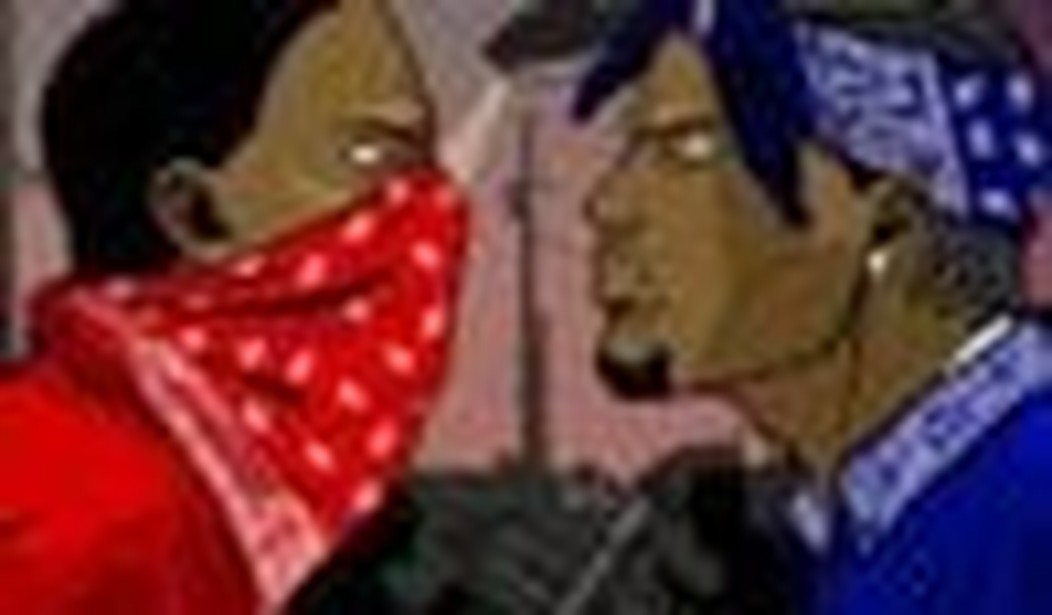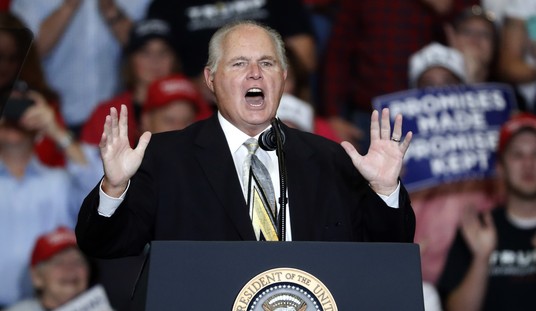Crips and Bloods: Made in America asks a complicated question: how did L.A.’s notoriously bloody gang war begin and what’s fueling it today?
Director and co-writer Stacy Peralta, who previously gave us the adrenalized surfing documentary Riding Giants, can’t leave his liberal talking points aside long enough to give audiences any real answers.
Instead, he blames hateful/ignorant/bigoted America at every turn. Meanwhile, the thugs are excused from even microscopic blame for their killings.
It’s a neat trick, but it’s a deeply dishonest one. And didn’t anyone realize the film, in limited release across the country, is coming out during the age of Obama?
It’s all a shame, since the subject matter cries out for a credible documentary. The lives being lost in the City of Angels could use an honest voice to at least point survivors in the right direction.
Crips and Bloods begins in the late 1950s/early 1960s, a time when entrenched racism meant young blacks couldn’t enter the Boy Scouts, job opportunities were few, and bigoted housing legislation ensured they remained segregated from cozy white neighborhoods.
Some blacks decided to make their own version of the Boy Scouts, although these groups tended to involve fisticuffs, not merit badges.
“In those days, we gave an appointment for an ass whupping,” one former group member wistfully recalls.
So far, Peralta is on sound footing, and he makes a persuasive case that all of the aforementioned played a role in the 1965 Watts riots.
Once peace was restored, the black power movement resumed in earnest. And that, we’re told, is why we have Crips and Bloods stalking California till this very day.
Huh?
The documentary doesn’t even try to tie the two cultural movements together. How a violent revolution against oppression became an excuse for blacks to kill other blacks with abandon isn’t even marginally sketched out.
We do hear from a black survivor from the ’60s, who argues something akin to the fact that the oppressor, aka “the Man,” made blacks begin oppressing each other.
Peralta isn’t done with his ideological bag of tricks. He later trots out prison incarceration rates, the war on drugs, the crack epidemic of the ’80s, the war on gangs, and even the war on crime as forces specifically targeting blacks.
Only in the film’s final moments do we hear from people, including some former gang members and football great Jim Brown, who tell us the solution to the gang warfare must come from the residents themselves.
Wouldn’t their stories and their efforts at stopping the bloodshed be a better fit for a film like this? But personal responsibility barely make a cameo here.
One former gang member describes how, once he stopped dressing in gangster garb, he felt liberated and free. And his broad smile speaks a truth Peralta almost seems embarrassed to include.
On paper, Peralta’s muscular style of documentary is the perfect match for the subject matter. His films always look impressive, and he’s assembled a massive database of visuals from L.A.’s most depressed communities.
But he plays fast and loose with the timeline, and the viewer is never quite sure whether the interviews in question are fresh or swiped from the archives. Peralta is also guilty of glamorizing the gang members, giving them plenty of screen time to pose, preen, and flash their colorful gang names.
The talking heads who flesh out the narrative — Forest Whitaker provides brief narration duties — alternately glorify and excuse gang behavior. The on-screen academics are even worse, condescending to the gang members as if they had no ability to make any choices for themselves.
To hear them tell it, it’s impossible for anyone to resist the drug culture or flee L.A. for healthier environs. Never mind the fact that plenty do just that, or that poor blacks in the area don’t all end up wearing blue or red colors.
Naturally, the critical community is throwing its collective arms around the new documentary. But one surprising voice couldn’t stomach Peralta’s approach.
Manohla Dargis, the New York Times’s movie critic and someone who recently jammed an Abu Ghraib analogy into a film review, found the film essentially hollow.
“It’s another to argue, as [Peralta] basically and perhaps unwittingly does, that these gangs can be all but excused by racism,” she writes.
Crips and Bloods: Made in America goes out of its way in the final half hour to detail the cost of the ongoing war. We see L.A. residents, all of whom have lost a loved one due to gang violence, staring blankly at the screen or crying softly while the camera lingers on their pain.
It’s a haunting series of images, but their grief deserves a better documentary.









Join the conversation as a VIP Member